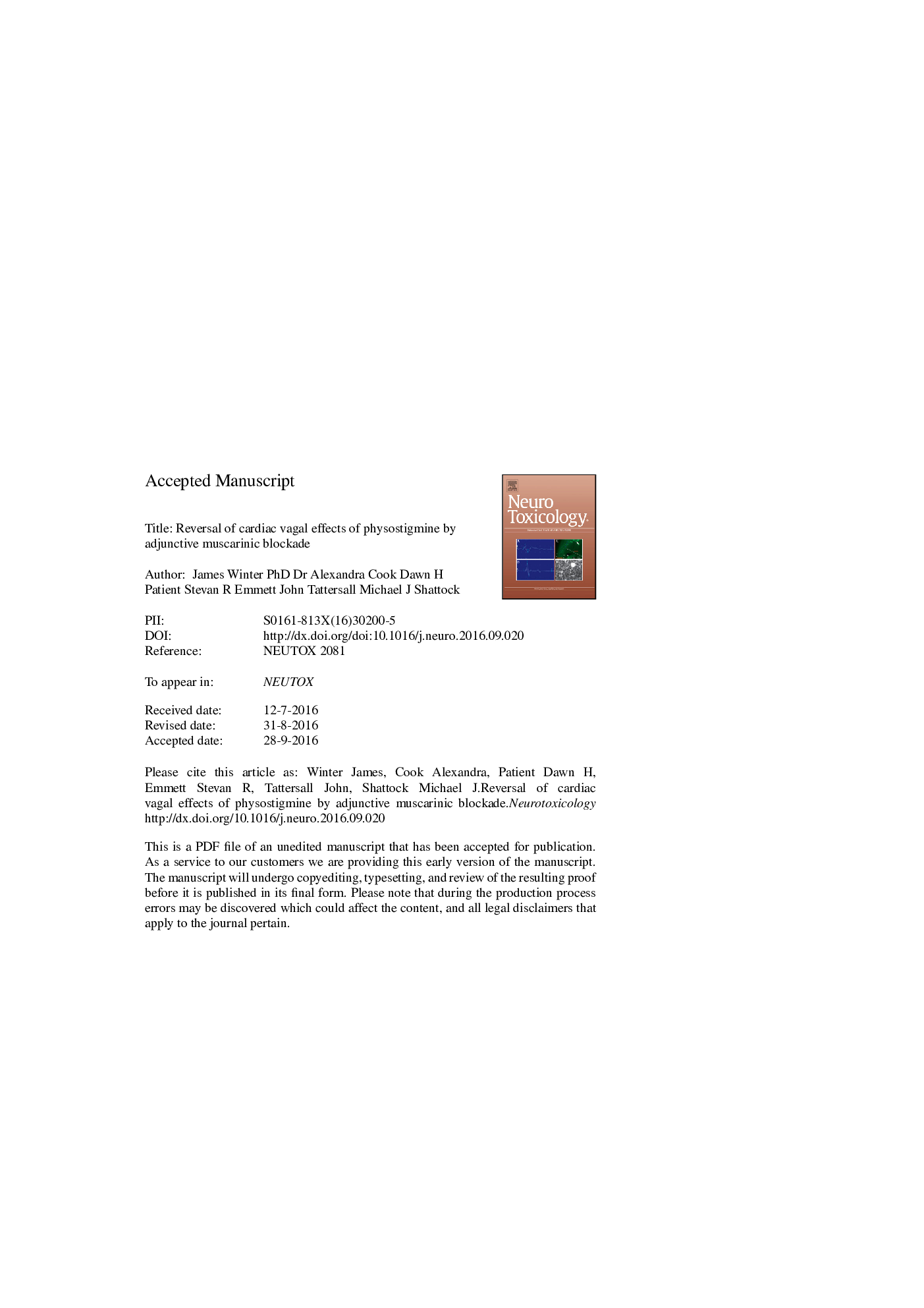| Article ID | Journal | Published Year | Pages | File Type |
|---|---|---|---|---|
| 8550470 | NeuroToxicology | 2016 | 27 Pages |
Abstract
Pre-treatment with reversible acetylcholinesterase (AChE) inhibitors is an effective strategy for reducing lethality following organophosphate nerve agent exposure. AChE inhibition may have unwanted cardiac side effects, which could be negated by adjunctive anti-cholinergic therapy. The aims of the present study were to examine the concentration-dependent effects of physostigmine on cardiac responses to vagus nerve stimulation (VNS), to test whether adjunctive treatment with hyoscine can reverse these effects and to assess the functional interaction and electrophysiological consequences of a combined pre-treatment. Studies were performed in an isolated innervated rabbit heart preparation. The reduction in heart rate with VNS was augmented by physostigmine (1-1000 nmol/L), in a concentration-dependent manner - with an EC50 of 19 nmol/L. Hyoscine was shown to be effective at blocking the cardiac responses to VNS with an IC50 of 11 nmol/L. With concomitant perfusion of physostigmine, the concentration-response curve for hyoscine was shifted downward and to the right, increasing the concentration of hyoscine required to normalise (to control values) the effects of physostigmine on heart rate. At the lowest concentration of hyoscine examined (1 nmol/L) a modest potentiation of heart rate response to VNS (+15 ± 3%) was observed. We found no evidence of cardiac dysfunction or severe electrophysiological abnormalities with either physostigmine or hyoscine alone, or as a combined drug-therapy. The main finding of this study is that hyoscine, at concentrations greater than 10â8 M, is effective at reversing the functional effects of physostigmine on the heart. However, low-concentrations of hyoscine may augment cardiac parasympathetic control.
Keywords
Related Topics
Life Sciences
Environmental Science
Health, Toxicology and Mutagenesis
Authors
James Winter, Alexandra R. Cook, Dawn H. Patient, Stevan R. Emmett, John Tattersall, Michael J. Shattock,
